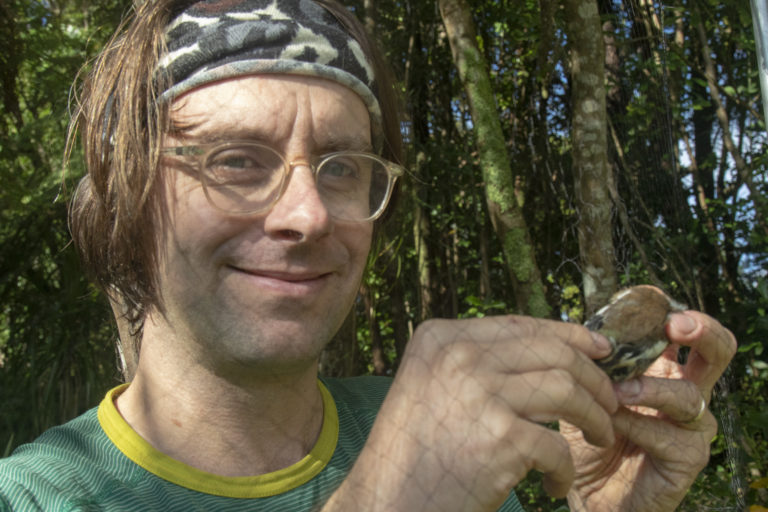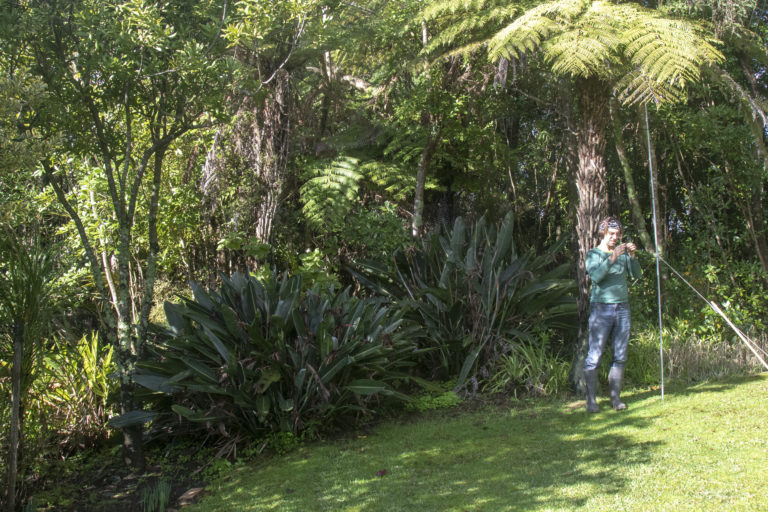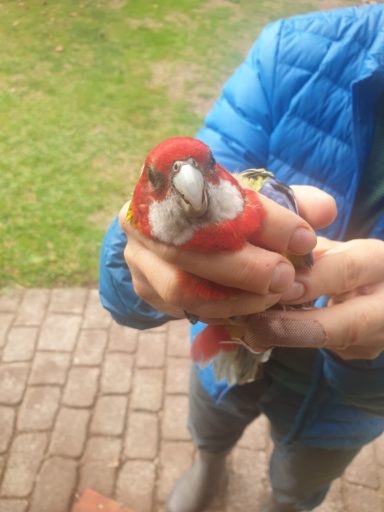Have you got a resident fantail that hangs out in your garden? Are you sure there’s just the one? When Auckland University’s Dr James Russell banded the birds in his home garden he was amazed to find his ‘resident pīwakawaka’ was actually 36 different fantails all visiting his garden at different times.

It all began with the Covid 19 lockdown. What’s a conservation scientist to do when he can’t actually get out into the bush to carry out his predator control research?
James reckoned he needed a hobby project to keep him sane. He’d already had training in how to band birds and had a permit from the Department of Conservation to carry out mist netting, but DOC reckoned he needed more practise at getting birds out of the net.

“So I started setting up mist nets in my backyard,” he says. “Lockdown was a chance to get a lot of practise very quickly and I caught 172 birds over Lockdown levels 4 and 3, some of them multiple times. Every night I saw a fantail some time around sunset and it was a different, unbanded fantail each night. I had thought I had just the one fantail visiting all the time.”
James’ backyard bird-netting shows that the counting technique used in New Zealand’s annual ‘Backyard Bird Count’ (just completed) is actually counting the minimum number of birds visiting your garden.
“With the Backyard Bird Count, you count the most birds of each species that you see at one time,” James explains, “So if you see three fantails at once then you know you have at least three fantails visiting. But you could have more.”
Many more – if James’ 36 fantails are any indication!
James and his family live at Swanson in the Waitakere foothills with plenty of neighbouring forest.

“We’ve carried out predator control in the backyard since we bought the house seven years ago,” he says, “so Lockdown was a rare opportunity to quantify the benefits of that work. Fantails, tūī and kererū are three species that really benefit from predator control. I also take part in the Garden Bird Survey each year – when I did it the other day, some of the birds I counted were banded birds from lockdown that were still around the garden several weeks later.”
James caught and banded a good variety of birds in his backyard over his 8 weeks of mist-netting practice, helped by his two-year-old daughter who learned how to hold and identify the different species.
“There were juvenile kingfisher, the resident tūī, kererū and morepork,” James recalls, “silvereyes, grey warblers and eastern rosellas and the common introduced birds like blackbird, song thrush, house sparrow, chaffinch, greenfinch and goldfinch. There was a good diversity of birds and a lot of juvenile fantails.”
“The blackbirds, thrushes and sparrows were given colour bands so that they could be individually identified,” James says. “Banding birds is a powerful tool for estimating population size based on how often you see individual birds. I was also helping DOC to trial the colour bands.”
James set the nets up at various spots along the tracks that run through his forest garden.
“I had three nets that I set up in different places. I moved them around depending on what was fruiting and where the birds were flying,” he explains. “Then I checked the nets every half hour to see what I’d caught.”
James and his family don’t own a cat – but at least one neighbourhood moggy was spotted taking an interest in the activity.

“I was trying to catch our resident morepork one night, playing morepork calls to draw it into the net. When I caught the morepork and went to retrieve it, I saw two eyes gleaming back at me – a cat watching. It had been attracted to the sound of the recording.”
For anyone who thinks they’d like to mist-net and band visiting birds – perhaps as part of a community project they volunteer with, James advises there’s a bit of training and paperwork to be completed first.
“People can check out the website of DOC’s National Bird Banding Office to find out about training and how to get your banding certificate,” he says. “BirdsNZ (formerly the New Zealand Ornithological Society), provides the training. You also need a Wildlife Act Authority – a DOC-issued permit – to carry out mist netting,” he explains.
If you’re keen on learning more about our birds, the effort is well worth it. The results revealed by banding birds can be an eye-opener – even for an experienced academic researcher specialising in predator control. Is that fantail flitting around the eves the same one you saw yesterday – or is it one of perhaps three dozen who visit your backyard? There’s only one way to find out…

